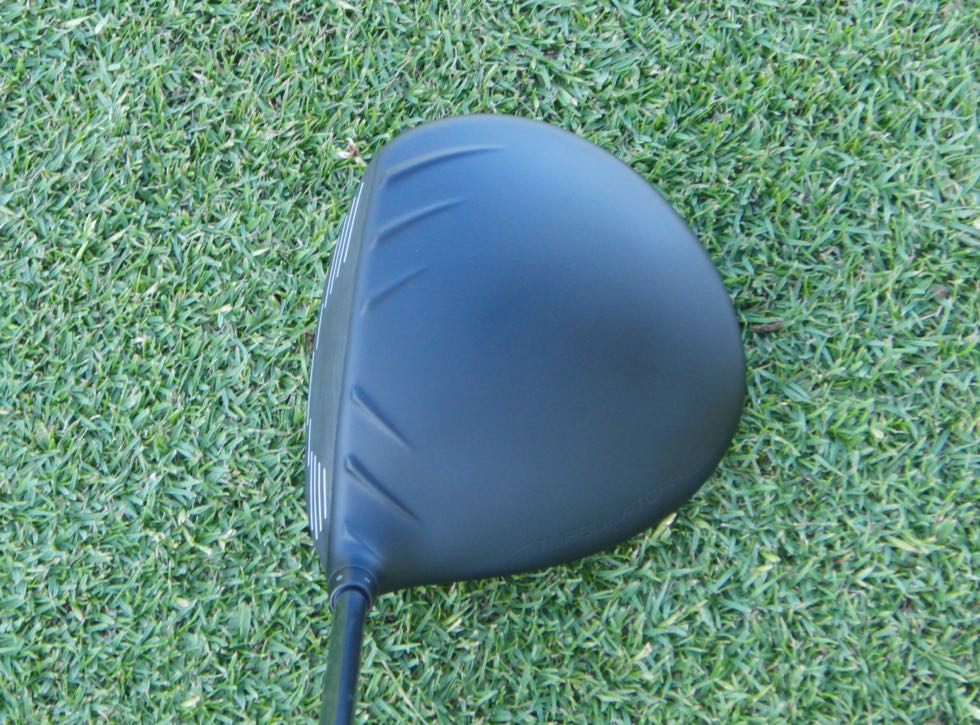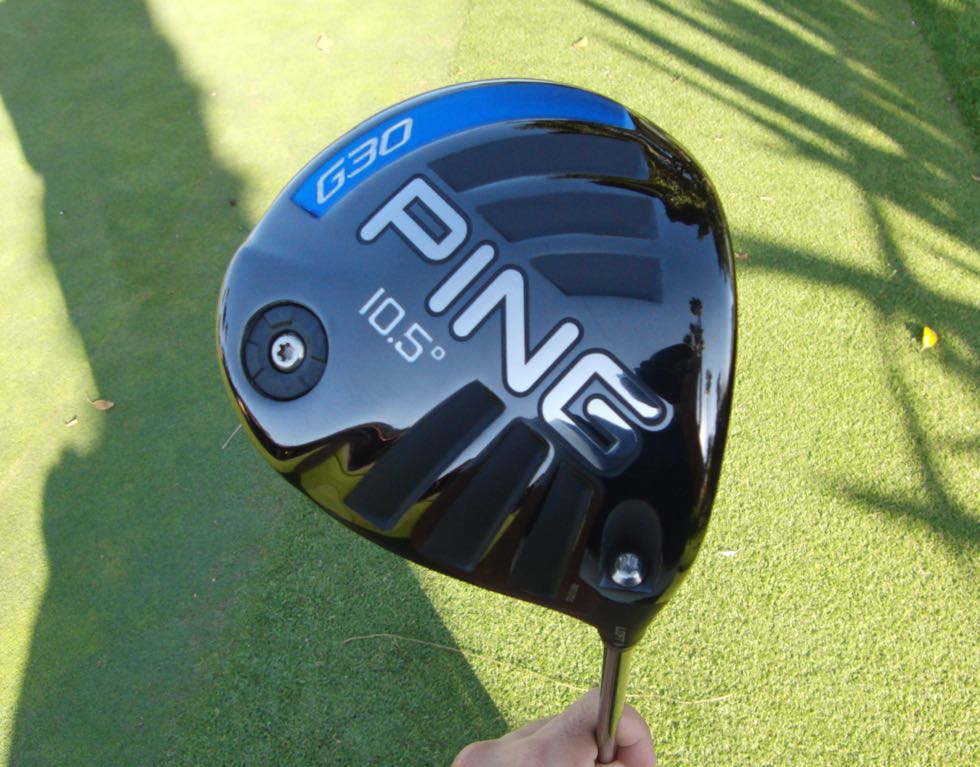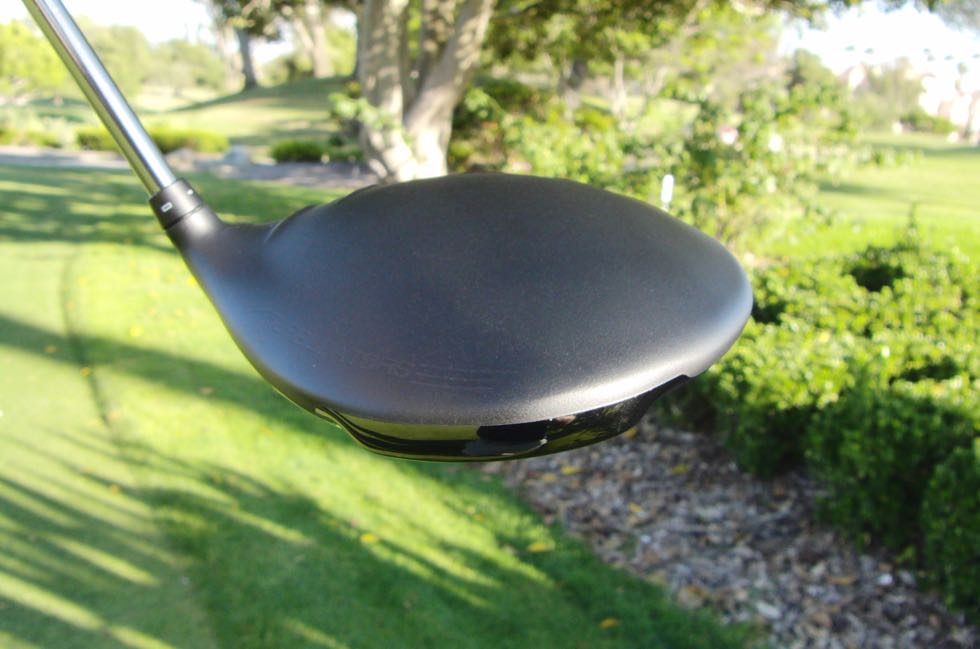 Over the last few years, PING drivers have been gaining more and more popularity. Part of that may be due to the fact that one of the longest players on the PGA Tour, Bubba Watson, is a member of their staff. Like many companies, PING has a couple of different driver lines, each aimed at a different group of golfers. While there have been options such as the Anser driver or the short lived K series, most of PING’s products are either part of the “i” series or “G” series. The “i” series has typically been viewed as the line for the better player, while the “G” series is more for the weekend warrior. While some of that still holds true, the lines are becoming more and more blurred and it isn’t uncommon to see the better player, including the likes of Bubba Watson, with the “G” series driver in the bag.
Over the last few years, PING drivers have been gaining more and more popularity. Part of that may be due to the fact that one of the longest players on the PGA Tour, Bubba Watson, is a member of their staff. Like many companies, PING has a couple of different driver lines, each aimed at a different group of golfers. While there have been options such as the Anser driver or the short lived K series, most of PING’s products are either part of the “i” series or “G” series. The “i” series has typically been viewed as the line for the better player, while the “G” series is more for the weekend warrior. While some of that still holds true, the lines are becoming more and more blurred and it isn’t uncommon to see the better player, including the likes of Bubba Watson, with the “G” series driver in the bag.
With the G30 driver, PING has their most radical product offering to date. Known more as a traditional company, it isn’t often that their clubs have technology not seen on other clubs. The company was among the last to go to adjustable hosels as standard for their drivers, and even at this point there are other hosels that are much more advanced and allow for more settings. Also, you aren’t going to find any movable or sliding weights on this club that will let you fine tune the club’s center of gravity. What you will find, and what’s not on any other driver currently available, are “Turbulators.”
Read on to find out exactly what Turbulators are, how they work, and whether they lead to a driver that’s worth putting into your bag.
Specs
For the purpose of this review, I received the standard (not SFTech or LSTech) version of the G30 Driver. I received it with a 10.5 degree head and the standard PING TFC 419D stiff shaft. This was a little different for me as I have not played a PING driver before. At this point PING remains about the only major equipment manufacturer that still produces their own shaft for their clubs rather than relying on a third party offering. To this point, I’ve heard great things about their shafts and looked forward to putting it in my bag. The club also came with the standard PING grip, which is fairly similar to a Tour Velvet. While it is a solid grip, I prefer a wrap style and have since replaced it with a PURE Wrap.
Esthetics
The looks of this club is one area where I was the most torn. When it first came out, I’ll admit that my initial reaction was not a positive one. I mean, what the heck were those bumps on the crown? What are they thinking, that’s going to look horrible! Then I saw the club in person, and I’ll admit that I was wrong. The bumps (the Turbulators) aren’t distracting at all, and in fact serve as the alignment aid for the club. In that sense, they are actually an upgrade in my opinion as the previous “half-moon” alignment aid that proceeded this was ugly.
The rest of the club looked good to me from the start. In the past I used a TaylorMade RBZ driver, and while I wouldn’t say that I was a fan of the white crown, what I did like was the matte finish and the lack of glare that came with it. This is one area where I think PING has hit a home run, as the crown remains dark in color (almost a charcoal grey) but has a matte finish. The face of the club retains the dark look, using the PVD finish that has become popular over the last handful of years and the sole is a glossy black with blue accents.
As I mentioned before, the club’s Turbulators serve a secondary purpose of being an alignment aid, and at address, they frame the ball very well. My preference has always been for drivers to have no alignment aid at all, and this comes very, very close. The club comes in at a full 460 cc in volume, and this isn’t a club that hides its size very well. If you tend to like the smaller looking clubs, this might be one area where the G30 might give you some pause.
Technology and Design
The standard PING G30 is designed as a full-sized, 460 cc driver aimed at a wide array of golfers. Obviously, the big piece of technology on the club are the Turbulators. Like I said before, they do a great job of helping the golfer line up their shot, but, I think that was more of a happy accident as that is not the reason why they are there. The purpose of the Turbulators is to increase the club’s aerodynamics performance, allowing it to move more efficiently though the air during the swing. A club that moves more efficiently throughout the swing moves faster. We all know that faster swing speed equals faster ball speeds, and faster ball speeds equal more distance, something for which every golfer is looking.
While that is the big piece of visible technology on the club, there is much more under the hood so to speak. Also new to the G30 is the T9S Face material. Compared to materials that PING has previously used, T9S titanium is stronger and lighter in weight, allowing the company to make a thinner, hotter, and more consistent face. The body of the club is constructed from Ti 8-1-1; this creates a lightweight club and allows the engineers to move weight around to optimize the clubs center of gravity.
The club also uses the updated Trajectory Tuning+ Technology. With this version of PING’s adjustable hosel, the user can select to use the club’s stated loft and then +/- 0.6° or 1.0° giving a total of five different options. According to PING, their adjustable hosel also weighs the same as their non adjustable hosel, meaning that having those extra options of adjustability isn’t costing you performance elsewhere.
The technology in the club continues up into the shaft as well. The most common stock shaft for the club (and the shaft that is in mine) is the TFC 419D. This shaft was created with a balance point closer to the grip end of the club. This allows for a heavier club head which contributes to the clubs high MOI and and low center of gravity. In the end, what the company is looking to do is produce a club with high launch, low spin, and extreme forgiveness.
While I reviewed the standard G30 here, PING does produce two other versions of the club as well. There is the G30LS (Low Spin) as well as the G30SF (aimed at those who slice the ball too much).
Performance
I’ll just lay it out there; with out a doubt, the PING G30 is a club that will be in my bag for a long, long time. If I wasn’t in a position to review clubs and have the opportunity to try out different drivers, this would be a club that I could see myself playing for years.
We’ll first talk about the sound of the club. In the recent past, I’ve played mostly Callaway drivers and have become very accustomed to the somewhat muted and solid sound of their club. With the PING, the sound at impact still is very solid, but it is LOUD. It honestly was a bit surprising at first, but having played with it for a while now, it is definitely something that I have become used to and it does not bother me one bit anymore. Sound is an important aspect in a club because it is what many actually interpret as the feel of the club. To that end, the louder sound does make it feel powerful. Also, it is pretty easy to tell if you missed the ball out on the toe or in on the heel of the club as the sound is much more dead.
While you can definitely feel (or hear) if you hit it on the toe or heel, you’d be hard pressed to actually prove it based on the results the that club produces. As far as actual club performance goes, this is about the most consistent club I have played, and those strikes that miss the center of the club face are forgiven, especially left and right. I’ve played drivers in the past where catching one out on the toe would result in an ugly hook that would leave you in the trees or worse; that’s not so much the case with the G30; shots anywhere near the center are going to be just fine. To put it simply, the club is consistent, even when I am not.
All that is great, but the question that many have is, do the Turbulators actually work? In my opinion, I would say that they do. I’ve been able to swing this club on a launch monitor and it is definitely on the top end of my swing speed range. On top of that, the results on the course speak for themselves as I consistently find myself in the fairway at the 235 to 245 yard mark, which, with my swing and swing speed is about the max.
Conclusion
Without a doubt, if you are looking for a new driver, the PING G30 should at least be on your list. I’d say more than any other company, PING is one that has a following, due at least in part to their unique looks. You know a PING iron from its design and now the same can definitely be said for their driver. What I’ve realized reviewing this club though, is it isn’t just the look that makes somebody a “PING guy.” While they definitely have a look and feel that many become accustomed to and prefer, it is high performance that keeps them coming back.
With an array of stock shaft offerings (beyond the TFC 419D, there is the Tour 65, Tour 80, TFC 80D, and TFC 59 Distance) and three different models (standard as well as the LSTech and SFTech), there is definitely a G30 out there that will fit any golfers swing.





Great review the SF Tec version is actually a replacement for the K15 and the LS Tec is the replacement to the I25 since Ping decided to discontinue the K and I series woods and combine them under the G product line.
The G30 SF Tec is longer and just as forgiving as the K15.
Great review Tristan. Im gaming the i25 currently and love it. If the G30 is an upgrade at all Ping did a hell of a job.
Thank you for the review. Agree – if you are buying a new driver, demo the Ping, as well as Callaway, TM, et al. The Ping seems a great balance of distance and forgiveness with emphasis on forgiveness. Drivers are funny creatures so one must demo.
I should add the Callaway XR Driver has its own version of “tiurbulators” in its step crown.
Good review Tristan. And yes, the “Tribulators” serve a secondary function of helping you line up the ball.
I tried out the G30 models yesterday on a launch monitor. I tested out all three head versions with the PING TFC 419D Regular shaft.
– SFTech / 10* : SF = straight flight, designed to help slicers draw the ball. I don’t need help on this. I got lots of hooks, even with open stance. Just not the head for me. And, only has D1 swingweight.
– LS Tech /9* : Low Spin variant; Got a mix of low draws and low fades, and low distance. I’m not sure I have enough clubhead speed to hit this.
– G30 / 10.5* : This one worked for me. Had a couple of high hooks at the start, but was able to work into a slight draw with a square stance. A tried a couple of fades, and got a fade and a big slice – at least both went to the right. Got 83-85 MPH clubhead speed, and total distance of 220 – not bad for indoors hitting out of a box.
G30 / 10.5* / TFC 419D Regular would be one I would test against other driver models in future.
WUTiger, I have the same swing speed. But I use a diamana blueboard 63 stiff. With our swing speed,you could use the 419 stiff but the Blueboard is what you need. I hit my G30 230-240 with your swingspeed total realworld distance. Further when dry and drawing.
Unfortunately I’m not too impressed with the Ping G30. I have the Tour 65 shaft. It’s the SFT Model. My miss hit drive is mostly a push-push slice. The G30 seemed to exacerbate that problem. I own the following drivers:
Ping G20 with TFC 169
Ping G25 with TFC 169
Ping G30 with Tour 65
Titleist 913 D2 with Rip Phenom 70
Distance: Titleist 913 D2
Forgiveness: Ping G25
Accurate: Ping G20
Solid Feel: Titleist 913 D2
Worse Shots (banana slice, pull hooks) Ping G30
My swing speed analyzer showed best to be with Titleist at 116.
Slowest was Ping G20 at 109.
Ping G30 sounds great, looks great but I just don’t see the SFT doing much.
Do not, repeat NOT purchase this club if you are a beginning or novice golfer. The misleading reports on how forgiving this club is are simply that misleading. If you are Bubba Watson, or a very good golfer looking for a tweak, then this club would possibly be forgiving. Being a 2 year golfer, I had to work through problems with my Callaway driver which I ultimately did to hit straight. I spent the money on a G30 thinking it would be a logical next step. BOY was I WRONG. This club took my worst problems and timed them by 10!
This club is JUNK for any type of golfer that is less than professional. I am stuck with it now and will find a way to use it just because of the excessive price, but DO NOT make the same mistake with this horrible club that I did!
John, the club is not horrible as you claim… it’s more likely you just need to spend some time with it and get the feel of how to hit it. I think it’s a little premature and misleading to call the G30 junk when so many people are using them with great results. I also think your interpretation of “forgiving” is not realistic. Forgiving does not mean the club corrects bad swings or flawed mechanics. Forgiving is really just a description of how a club maintains ballspeed across the face when you miss the sweetspot.
I went from a Bio Cell to the G30 and it wasn’t instant magic, but I’ve been gaming it for about 4 months now and have really gotten the hang of it. Though some drivers just don’t work for some swings, it’s rarely ever the driver that’s the real issue. I’ve made the mistake over the last few years of changing drivers every month or so because “I just couldn’t hit my current driver”. All that did was exacerbate the problem because I was trying to re-learn a new driver every few weeks and not giving myself time to really adapt to the change. I made the decision this year to stay with the G30 for an entire 12 months and so far I’m hitting the best drives of my life. Is it because the club is really any better than my previous choices? Nope… its just that I’ve really learned to hit this particular club and stopped chasing the dream.
Just curious, what model did you buy, the LS Tec, SF Tec or the standard G30?
@John, I don’t think that this is really fair to say. Not every club is going to be a fit for every golfer. For me, the club worked out very well and while I am not a beginner or novice, I’m sure not a great player. Buying a driver blindly because it is “the logical next step” isn’t the right move. It is important that you have the chance to at least demo the club first if not actually being fit for it.
Got this driver just before the season started. It did not give me 300 yard drives. In fact it is the same as any driver that I have tried at 230 yard average. What stood out is the ease of use, forgiveness. Not even once did I hit a horrible shot and it is the first golf game of the season for us here in Canada. Awesome club for me.
This is the MOST FORGIVING club I have ever used. I am Not A pro or even close, 13 handicap. I owned the G25 until yesterday when I traded it in in a G30 at the PGA Superstore in Birmingham Alabama. Was in the last legs of a golfing vacation from my home on the Mississippi Gulf Coast up through Georgia and North Carolina playing some mountain golf. Got the G30 and played a couple of Robert Teent Jones courses Xin Alabama. This club was very forgiving on mishits, I was able to work it left to right when I could never with my G25. I normally hit a draw but was able to hit slight draws or long big draws on doglegs that I could not with my G25. No doubt distance was greater. According to fitter at the PGA Superstoree my swing speed was averaging around 94-95 with a high of 97. I have never known what my swing speed was. I cannot imagine why any golfer could say this club is for pros only. I have seen big differences for me in the G25 and G30.
A very solid and confidence inspiring driver. I’ve only just received it (used) and only had one session at the driving range, but I really like how easy it is to hit and seems pretty forgiving to me. I got the standard head at 10.5 degrees. I’ve changed many drivers the past few years, but will be keeping this one in the bag for awhile.